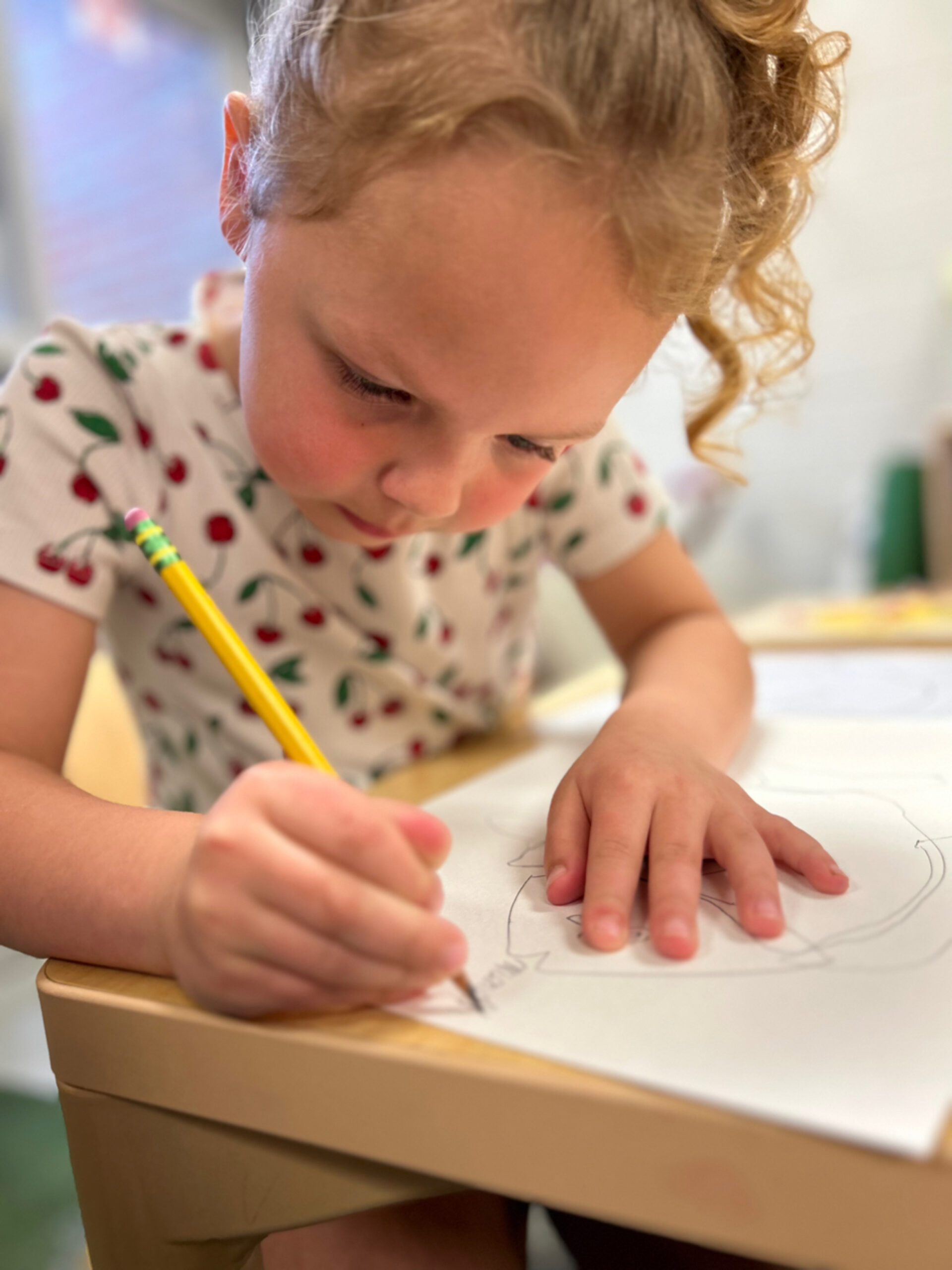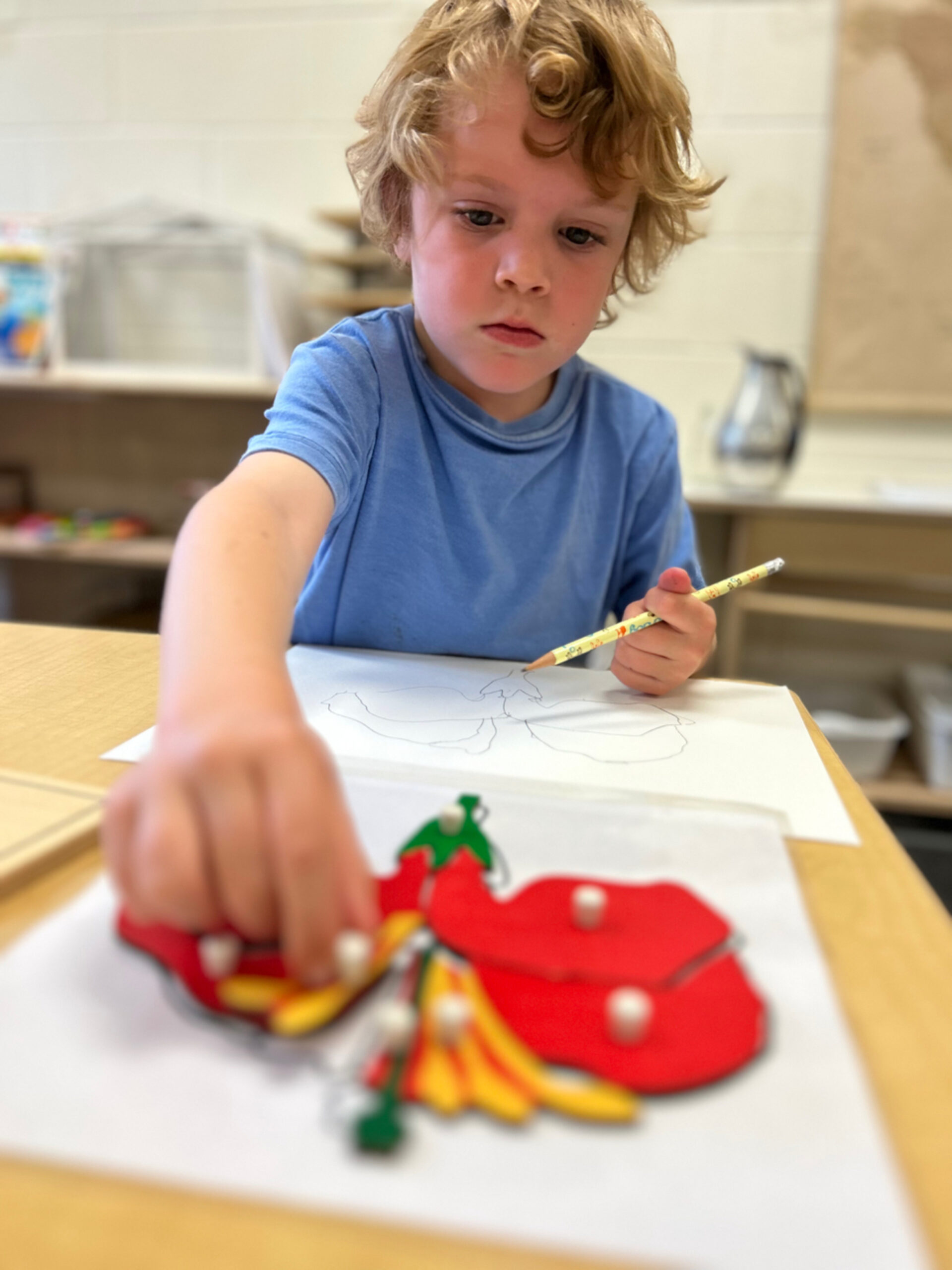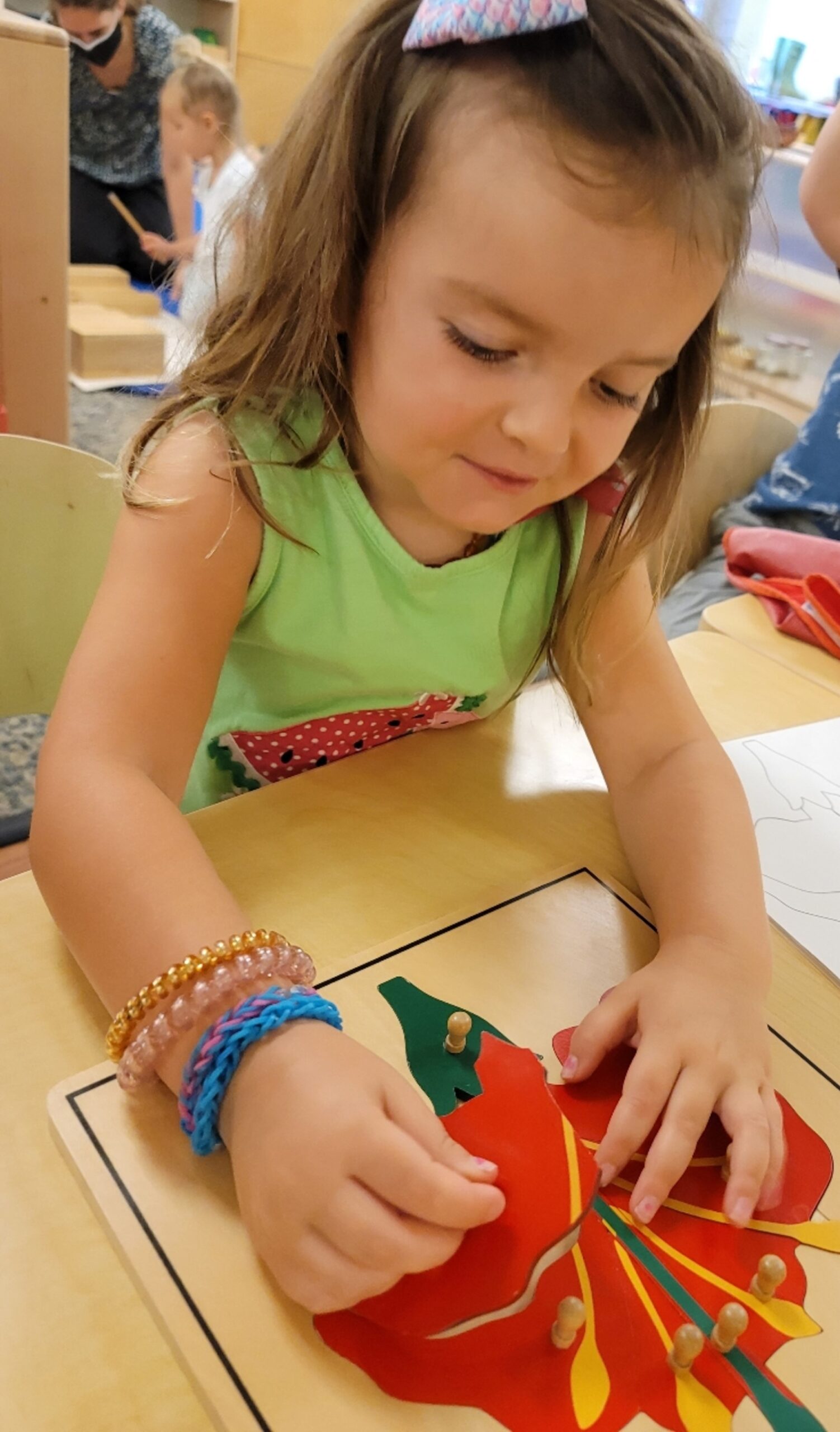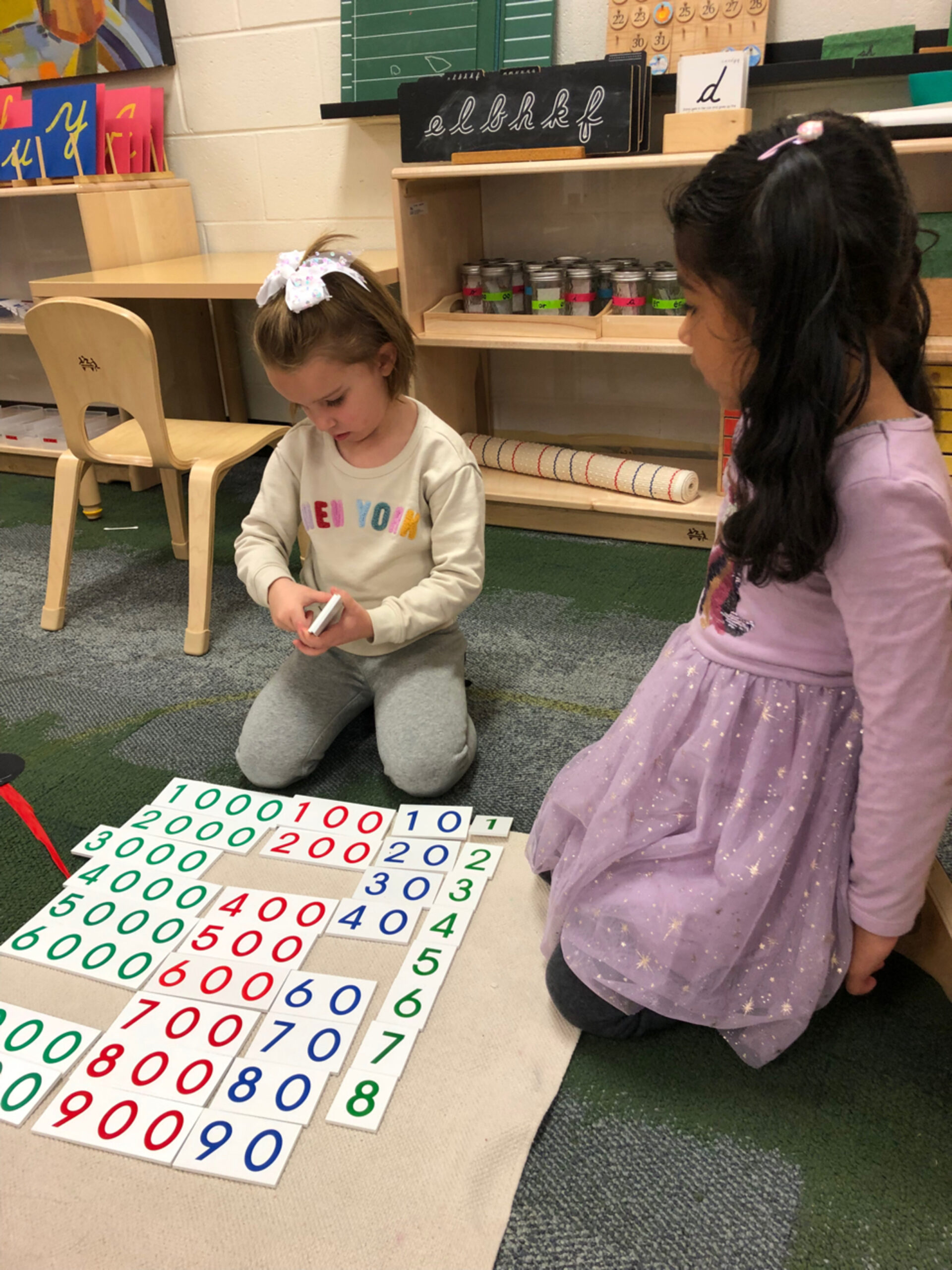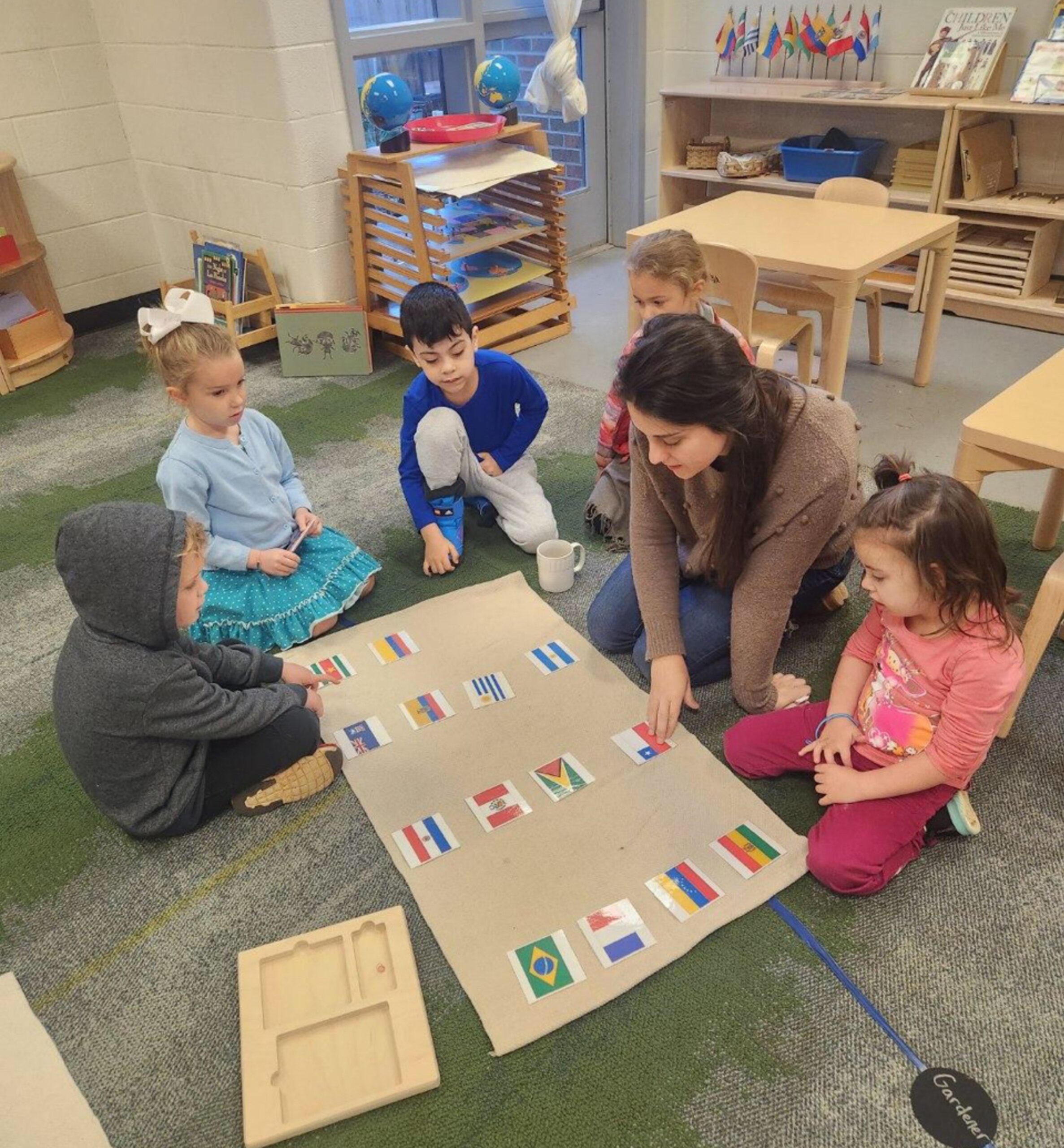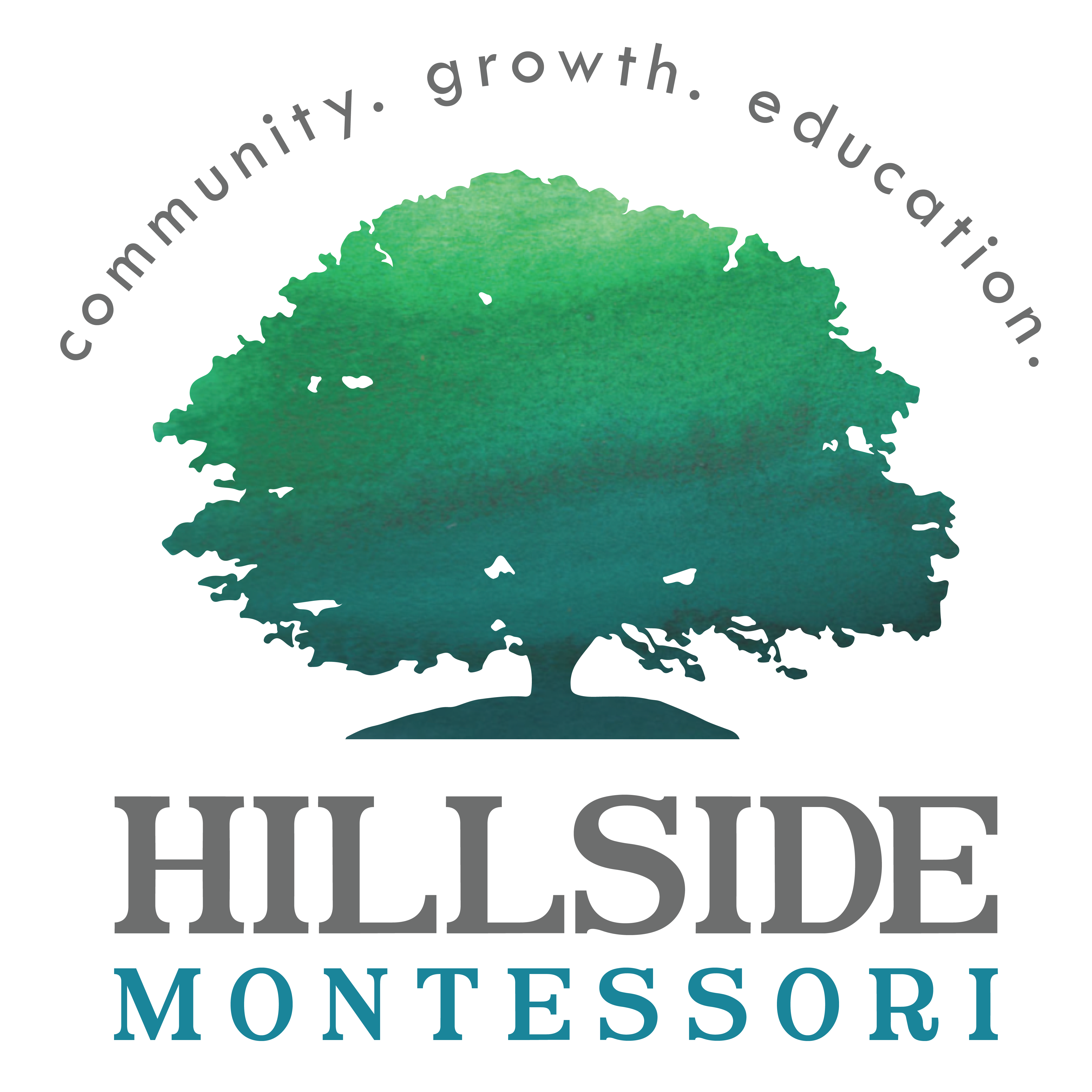At Hillside Montessori of LaGrange, we follow the Montessori method of education and approach the learning of each child as a whole person. Young children have an innate drive to learn. By the time they are three years old, children have learned many things by unconsciously taking in information from the environment around them. During this period of self-construction, we assist the child’s learning in all areas, not just the academic skills of reading, writing, mathematics, and science.
The children that participate at the Primary level are learning to do things by and for themselves, learning how to resolve conflicts, and how to function as a member of a community. We integrate opportunities to develop social skills and executive functioning. We take advantage of several sensitive periods (a length of time when a child is particularly open to order, movement, language, mathematical patterns, the senses, etc.) to help guide each child’s developmental learning.
The children choose materials independently during a three-hour morning work block. Lessons are typically given one-on-one and a child advances through the curriculum based on individual mastery.
“Our care of the child should be governed, not by the desire to make him learn things, but by the endeavor always to keep burning within him that light which is called intelligence.”
Dr. Maria Montessori
Importance of the Environment
Maria Montessori observed that young children effortlessly and unconsciously take in information and details from the environment around them, calling it an “absorbent mind.”
The classroom environment has been carefully prepared for the children in six main areas: (1) practical life, including art and outdoor activities, (2) sensorial, (3) language, (4) math, (5) cultural/science, including the study of people, places, animals, etc., and (6) grace and courtesy, including social interactions, community building, and conflict resolution.
Practical Life
Practical Life
This area of the classroom feels most ‘home-like’ with its materials and activities that help the children participate in daily life. The materials are child-sized and arranged in progressively more challenging activities. Practicing these life skills improve the child’s ability to concentrate, refines coordination, develops their sense of order, increases their independence, and builds confidence as children “do it by myself.” The children learn to care for themselves and their environment, both inside and outside.
Math
Math
The math curriculum in our Montessori environment builds on the experiences younger children have with our sensorial materials. Many early materials utilize geometric shapes or sets of ten to build decimal system understanding. The math materials build on that awareness to give the children a solid understanding of number symbols, quantities, place value, linear and skip counting up to 1000, fractions, and arithmetic operations into four digits. Using a variety of hands-on materials, a third-year child progressively learns to add, subtract, divide, and multiply with progressively more abstract methods.
Sensorial
Sensorial
The young child has a natural proclivity to discover by way of the hands. The sensorial materials were designed precisely to meet the young child’s need to manipulate objects using all of his or her senses while building an understanding of abstract ideas. These materials help a child refine gross and fine motor control, problem solve, and learn vocabulary. Concepts such as dimension, length, shape, color, weight, texture, tension, aroma, flavor, and sound all have a physical representation. Most materials also contain a built-in control of error so that the children can self-correct while exploring them.
Cultural/Science Studies
Cultural/Science Studies
Children are introduced to the wider world through our study of culture and peoples. We incorporate physical and social science activities, such as study of the continents, cultures, flags, states of matter, land and water forms, five classes of animals, and the parts of plants, leaves, and flowers. Also available are units that introduce the children to concepts such as gravity, buoyancy, life cycles, magnetization, weather, space, and others.
Language
Language
The Primary environment is language rich. As often as possible, we use precise terms in all curriculum areas. The Montessori approach to reading and writing begins by building a solid base for pre-reading using activities focused on sequencing, pattern recognition, matching, phonemic awareness, categorization, and classification. Simultaneously, our youngest children learn to associate the cursive letter symbols to their sounds and begin training their hands in letter formation. Once the child has a firm grasp of the letter sounds, we build words using a “moveable alphabet”, labeling objects and writing ideas phonetically before a child can form the letters with a pencil. There is usually a magical moment when the child realizes that they can also read these words! Usually in the third, Kindergarten year the child’s ability to write explodes into sentences and stories, as we expand into phonograms, sight words, and the parts of speech.
Grace & Courtesy
Grace & Courtesy
The early childhood environment is called a “Children’s House.” It is designed specifically to meet the needs of the child during this precious time when the children are self-creating. We strive to support the human tendencies for exploration, order, manipulation of objects, repetition, precision, perfection, and communication through the use of hands-on materials, by modeling behaviors, by role-playing, setting limits, and guiding.
Work vs. Play
“Among the revelations the child has brought us, there is one of fundamental
importance, the phenomenon of normalisation through work.”
-Dr. Maria Montessori
“Among the revelations the child has brought us, there is one of fundamental
importance, the phenomenon of normalisation through work.”
-Dr. Maria Montessori
Work vs. Play
“Children are human beings to whom respect is due, superior to us by reason of their innocence and of the greater possibilities of their future.”
―Maria Montessori
“Children are human beings to whom respect is due, superior to us by reason of their innocence and of the greater possibilities of their future.”
―Maria Montessori
“Work” and “play” are interchangeable with most children of Primary age. Whereas the Montessori environment encourages and supports the independence of the child, this does not mean that the children can do anything they want. Learning grace and courtesy is essential to a functioning community. We guide the children in learning how to interact with their peers daily. We set limits, enforce boundaries, respect concentration and personal space. Children learn effective communication and conflict resolution using active listening and “I statements.”
Children are free to choose materials for which they are ready and have received instruction. Purposefully, we don’t insist on sharing materials. Instead, children learn responsibility for a material by always returning it ready for the next person and allow the others opportunities for patience or decision making when what they wanted isn’t available. We also promote compassionate interactions, moving the children past “sorry” to making sure the other is okay or making restitution for poor choices.
The emotional, intellectual, and physical safety of the children is essential to a productive learning environment. We use respectful language, encourage and entice to work, rather than force, strive to build an inclusive atmosphere, and set respectful limits so that the child can devote maximum energy to learning.
Children eat lunch together and then clear away lunch dishes, clean eating area, and put away lunchboxes. Younger students prepare for story and rest time and then quiet activities; older students transition to independent book time, cleanup activities, and then the afternoon work period.


